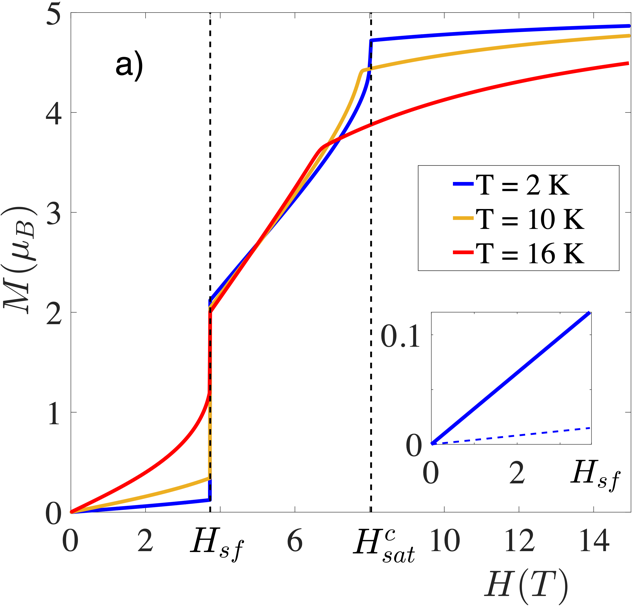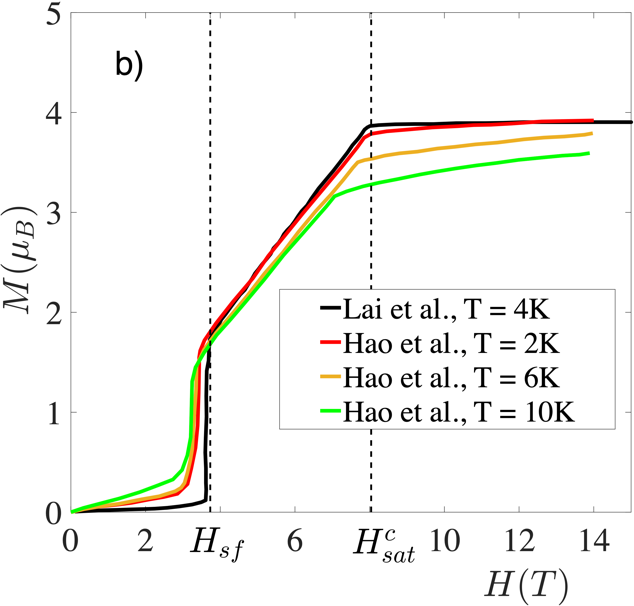
 Home Home |
 For authors For authors |
 Submission status Submission status |
 Current Current
|
 Archive Archive
|
 Archive
(English) Archive
(English)
|
 Search Search |
It is known that quantum effects can manifest themselves at the macroscopic level in anisotropic magnets with low critical temperatures of magnetic ordering. The physical reason for the difference between the results of the phenomenological approach for such materials and the results of the quantum theory is the crystal field, leading to mixing of the states with different spin projections.
In this paper, we show that the experimentally observed features of the low-temperature behavior of the magnetization of the van der Waals topological antiferromagnet MnBi2Te4 [1, 2] in an external magnetic field, oriented perpendicular to the layers of manganese ions, are due to the quantum effects caused by the nondiagonal nature of the trigonal component of the crystal field. In this case, the anomalous increase in the magnetization of MnBi2Te4 before the spin-flop transition, as well as after it in the phase of collapsed sublattices, is explained by the influence of the magnetic field on quantum fluctuations.


The theoretical dependences of the magnetization obtained considering the quantum effects are shown in Figure (a). They correlate well with the experimental data [1, 2] presented in Figure (b). The increase in the magnetization before the spin-flop field Hsf and after the saturation field Hcsat is determined by the quantum effects associated with the trigonal component of the crystal field.
1.Y.-J. Hao, P. Liu, Y. Feng et al., Phys. Rev. X 9, 041038 (2019).
2.Y. Lai, L. Ke, J. Yan et al., Phys. Rev. B 103, 184429 (2021).
V.V. Val’kov, A.O. Zlotnikov, A. Gamov, N.A. Fedorova, F.N. Tomolin,
JETP Letters 120, issue 7 (2024)